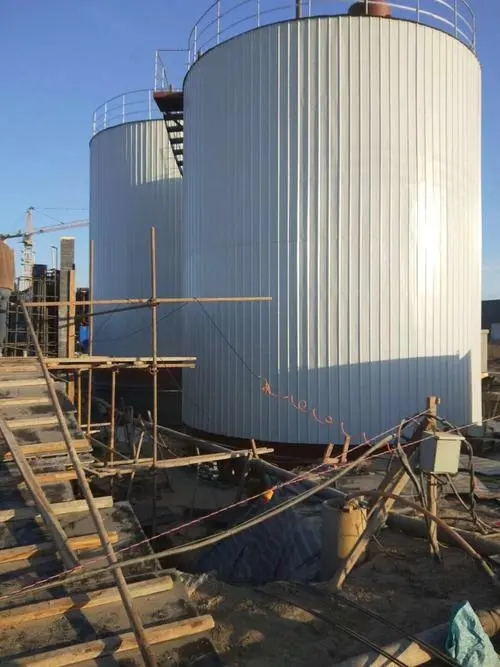19
2024
-
04
Sewage treatment IC process introduction
Author:
IC reactor is an efficient anaerobic treatment device introduced in recent years. This reactor cleverly uses the principle of internal circulation, so that waste water flows from bottom to bottom in the reactor, and achieves the purpose of purifying water quality through the adsorption and degradation of pollutants by bacteria. During the operation of the IC reactor, the treated water will flow out from the upper part of the reactor to realize the effective treatment and reuse of wastewater.
IC anaerobic reactor is the product of further innovation and development on the basis of classic UASB reactor. Similar to the UASB reactor, the IC anaerobic reactor is also capable of cultivating highly bioactive anaerobic granular sludge, which plays a vital role in wastewater treatment. However, the IC anaerobic reactor is more advanced in design and can form a unique fluid circulation within it, further improving the processing efficiency.

The process design of IC reactor is very clever. The wastewater is first pumped to the bottom of the reactor and into the first reaction chamber. Here, the wastewater is fully mixed with anaerobic granular sludge and most of the organic matter is converted into biogas. As the methane rises, it lifts the mixture from the first reaction chamber to the gas-liquid separator at the top of the reactor. In the separator, the biogas is discharged, while the mud-water mixture returns to the bottom of the first reaction chamber through the return pipe, forming an internal circulation.
This design of internal circulation brings many advantages. First of all, the biomass of the first reaction chamber is high, the sludge age is long, and the flow rate is fast, which makes the granular sludge reach the fluidization state and greatly improves the mass transfer efficiency. Secondly, the biochemical reaction rate is also improved, so that the ability of the first reaction chamber to remove organic matter is significantly enhanced. The wastewater treated by the first reaction chamber will automatically enter the second reaction chamber for further treatment, further degrade the remaining organic matter, and improve the effluent quality.
In the second reaction chamber, the residual organic matter in the wastewater is further treated. At the same time, the resulting biogas is also collected and passed through the collecting pipe into the three-phase separator. Finally, the mud-water mixture in the second reaction chamber enters the precipitation area for solid-liquid separation, the treated water is discharged from the outlet pipe, and the precipitated sludge automatically returns to the second reaction chamber, completing a complete cycle treatment process.
Through this series of exquisite design of the IC reactor, the wastewater can be comprehensively and efficiently treated in the reactor, and the effluent quality has been significantly improved, making a positive contribution to environmental protection and sustainable development.
Related Products
Biological nitrogen removal process of low temperature wastewater
2024-05-28
Prevention and treatment of calcium carbonate scaling in reverse osmosis operation
2024-05-22
Treatment of pyrazolone production wastewater - bipolar membrane electrodialysis process
2024-05-20
How much salt does sewage contain that can enter the biochemical system?
2024-05-17
Huanke Environmental Protection Technology
HOTLINE:
Address:Gongye 1st Street, Weicheng District, Weifang City, Shandong Province China
Contact:Zhang Gong
Phone:+86-18865361829
Email:sdhuanke@163.com


Consult
Copyright © 2023 Shandong Huanke Environmental Protection Technology Co., Ltd






